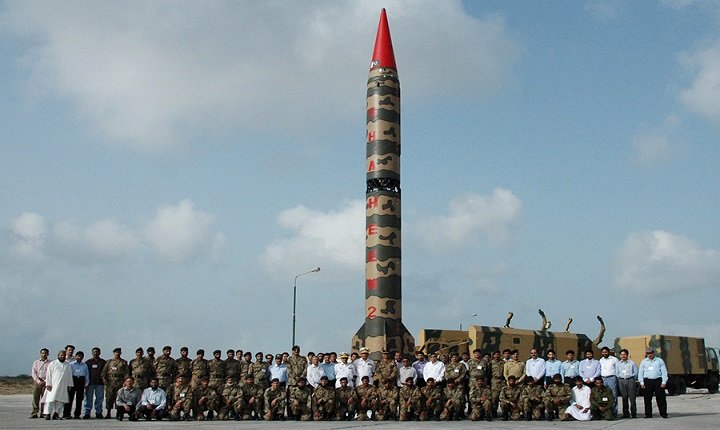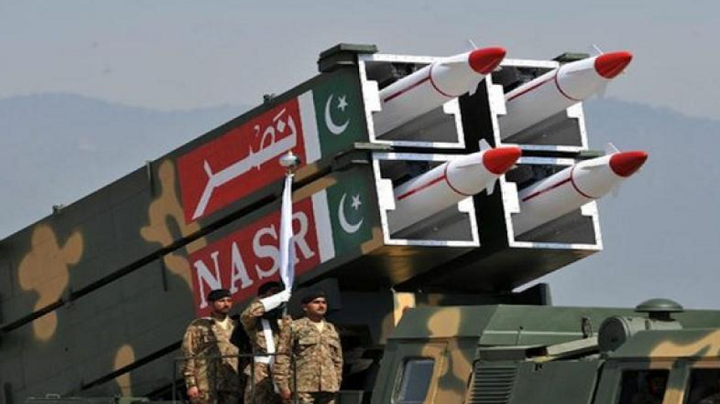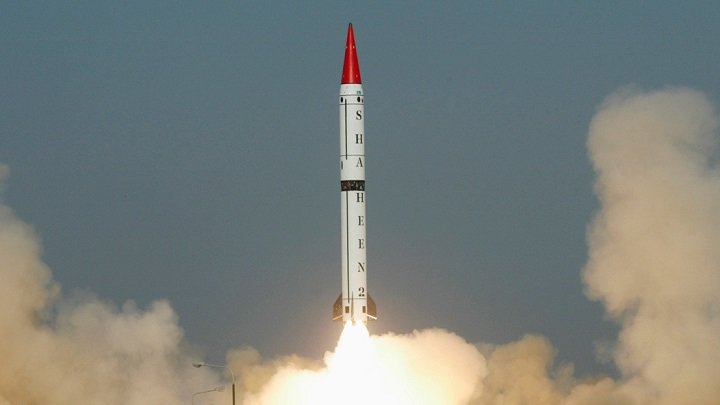
Nuclear Missile Made in Pakistan advancement of atomic rockets in Pakistan is a critical chapter in the country’s history. In this post, we’ll investigate when Pakistan created its to begin with atomic rocket, why it was a significant turning point, and the challenges confronted along the way.
Introduction to Nuclear Missile Made in Pakistan

Pakistan’s travel toward atomic capability started without further ado after its freedom in 1947. Whereas at first centered on serene atomic vitality, geopolitical pressures, especially with neighboring India, impelled Pakistan to investigate atomic weapons technology.
India’s tiny tests in the 1970s serve as a awaken-up call for Pakistan, nearly it to support its national guard.
But when did Pakistan effectively create a atomic rocket? Let’s jump into the timeline.
The Street to Pakistan’s To begin with Atomic Missile
- The Beginnings: The 1970s and 1980s
- 1974: India’s to begin with atomic test, “Smiling Buddha,” was a turning point. Pakistan’s then-Prime Serve Zulfikar Ali Bhutto broadly announced that Pakistan would coordinate India’s atomic ability, no matter the cost.
- Late 1970s: Beneath Dr. Abdul Qadeer Khan, Pakistan started working on enhancing uranium, a key component for atomic weapons.
The Advancement of Conveyance Systems
Having atomic weapons wasn’t sufficient; Pakistan required a way to convey them viably. This driven to the advancement of rockets competent of carrying atomic warheads.
- 1989: The Hatf-I, Pakistan’s to begin with ballistic rocket, was tried. In spite of the fact that it wasn’t nuclear-capable at first, it laid the foundation for future advancements.
When Did Pakistan Create Its To begin with Nuclear Missile Made in Pakistan
The Ghauri Missile
The Ghauri rocket, tried in 1998, checked Pakistan’s passage into the world of nuclear-capable conveyance frameworks. Here’s why it was a game-changer:
- Range: With a run of roughly 1,500 kilometers, the Ghauri seem reach profound into Indian territory.
- Nuclear Capability: It was planned to carry atomic warheads, making it a impressive deterrent.
- Technology: The rocket was accepted to be based on North Korea’s Nodong rocket innovation, exhibiting universal collaboration.
The Centrality of 1998 of Nuclear Missile Made in Pakistan
1998 was a point of interest year for Pakistan’s atomic program. Taking after India’s atomic tests in May 1998, Pakistan reacted with its possess arrangement of tests, getting to be the world’s seventh atomic control. The fruitful test of the Ghauri rocket set its status as a nuclear-armed state with valid conveyance systems.
Why Did Pakistan Seek after Atomic Missiles? Nuclear Missile Made in Pakistan
National Security
Pakistan’s atomic rocket program was to a great extent driven by security concerns. With a history of clashes with India.
Strategic Balance
India’s headways in atomic innovation and its procurement of long-range rockets made an awkwardness in South Asia. Pakistan’s atomic rockets pointed to reestablish parity.
Technological Advancement of Nuclear Missile Made in Pakistan
Developing atomic rockets was moreover a matter of national pride and a show of Pakistan’s logical and mechanical capabilities.
Challenges Confronted by Pakistan
Developing atomic rockets was no simple deed. Pakistan confronted a few challenges, including:
- International Sanctions: Taking after its atomic tests in 1998, Pakistan confronted financial and military sanctions from the Joined together States and other Western nations.
- Limited Assets: Not at all like bigger countries, Pakistan had to work with obliged money related and mechanical resources.
- Global Investigation: Pakistan’s atomic program was closely checked by worldwide organizations, making mystery and advance challenging.
Evolution of Pakistan’s Atomic Rocket Program
Pakistan didn’t halt with the Ghauri rocket. Over the a long time, it has created a extend of nuclear-capable rockets, including:
Shaheen Series:
- Shaheen-I: A little-range ballistic soar among a run of 750 kilometers.
- Shaheen-II: A middle-series rocket able of pending to 2,500 kilometers.
Babur Voyage Missile:
This rocket can be propelled from arrive or submarines, including flexibility to Pakistan’s atomic arsenal.
Nuclear Missile Made in Pakistan

A strategic atomic weapon planned for short-range utilize, improving Pakistan’s defense capabilities.
Conclusion
The advancement of atomic rockets in Pakistan, especially the Ghauri rocket in 1998, was a characterizing minute in the country’s history. It showcased Pakistan’s resolve to ensure its sway and keep up a key adjust in the region.
Today, Pakistan’s atomic rocket program proceeds to advance, guaranteeing its national defense remains strong.
FAQs:
1. Why is the Ghauri rocket vital in Nuclear Missile Made in Pakistan?
The Ghauri rocket was Pakistan’s to begin with nuclear-capable rocket, tried in 1998. It stamped the country’s capacity to provide atomic warheads and keep up a vital adjust in South Asia.
2. Who was the key shape after Pakistan’s atomic soar program?
Dr. Abdul Qadeer Khan is frequently credited as the father of Pakistan’s tiny agenda.
His commitments to uranium improvement and rocket improvement were instrumental.
3. How did universal sanctions influence Pakistan’s atomic program?
Sanctions forced after Pakistan’s 1998 atomic tests made financial and innovative obstacles. In any case, Pakistan’s administration remained committed to progressing its atomic capabilities.
4. What is the extend of Pakistan’s atomic missiles?
Pakistan’s rocket run shifts by type:
- Ghauri: ~1,500 kilometers
- Shaheen-II: ~2,500 kilometers
- Babur Journey Rocket: ~700 kilometers
5. How does Pakistan’s atomic program affect territorial stability?
Pakistan’s atomic program serves as a obstacle, pointing to keep up peace in South Asia by debilitating animosity from its neighbors.